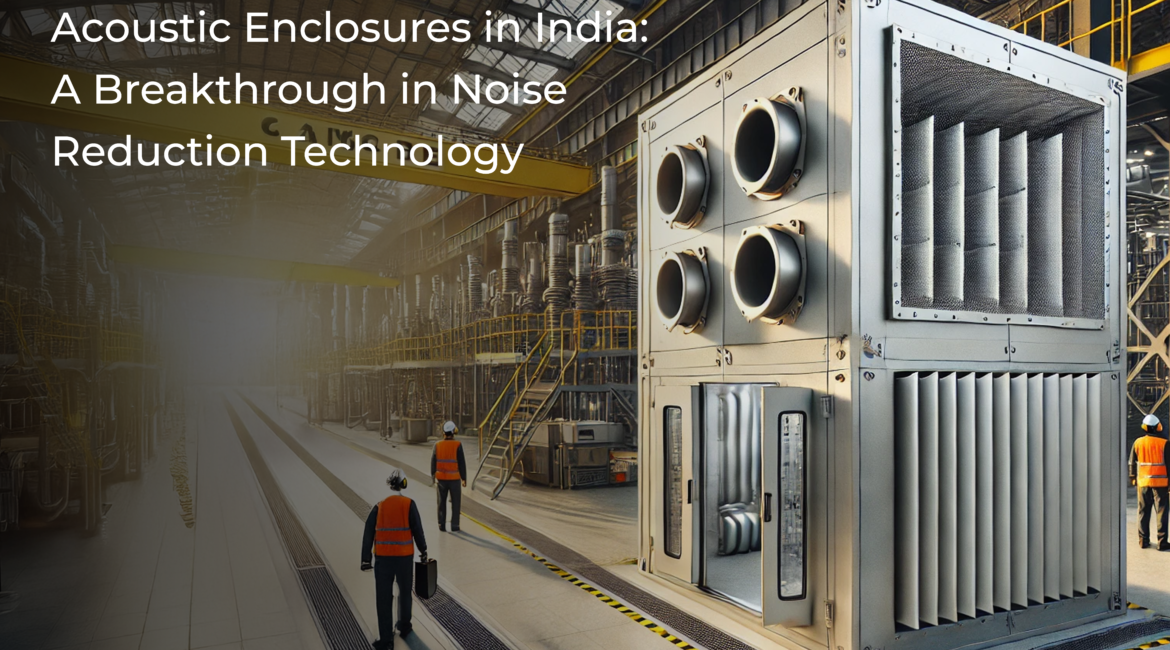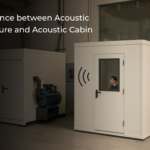In an era marked by rapid industrialization and urbanization, noise pollution has emerged as a critical challenge. From bustling cities to thriving industrial zones, unwanted sound disrupts daily life, affecting productivity, health, and well-being.
To counter this growing menace, acoustic enclosures have revolutionized noise reduction technologies, offering effective solutions tailored to India’s unique requirements.
Understanding Acoustic Enclosures
Acoustic enclosures are specially designed structures or covers that significantly reduce noise emissions from machinery, equipment, and industrial processes. Crafted with high-quality soundproofing materials, these enclosures serve dual purposes: they ensure a quieter environment and protect workers and nearby communities from harmful noise levels.
Commonly used in sectors like manufacturing, power generation, automotive, and construction, acoustic enclosures are engineered to address diverse soundproofing needs. They range from enclosures for generators and compressors to large-scale containment systems for industrial plants.
The Indian Context: Noise Pollution and Challenges
India faces a unique noise pollution crisis. According to a 2023 study by the Central Pollution Control Board (CPCB), cities like Mumbai, Delhi, and Kolkata consistently exceed permissible noise levels, especially during peak traffic hours and festive seasons. Moreover, with the government pushing for infrastructural growth through initiatives like *Make in India* and *Smart Cities Mission*, industrial noise has risen substantially.
This increase in noise pollution poses significant health risks, including hearing loss, stress, sleep disturbances, and cardiovascular issues. Industrial workers are particularly vulnerable, as prolonged exposure to high-decibel environments can result in permanent auditory damage.
The need for innovative and scalable solutions like acoustic enclosures has never been more pressing.
How Acoustic Enclosures Work ?
Acoustic enclosures employ advanced principles of noise control, such as:
- Sound Absorption: Materials like mineral wool, acoustic foam, and perforated panels absorb sound waves, reducing reflections and echoes.
- Sound Insulation: Specialized barriers block sound transmission, preventing noise from escaping the enclosure.
- Vibration Control: By damping vibrations generated by machinery, enclosures minimize structure-borne noise.
- Aerodynamic Design: Many enclosures are designed with airflow systems that reduce turbulence noise while maintaining equipment cooling.
These mechanisms ensure that acoustic enclosures not only reduce noise effectively but also maintain operational efficiency.
Applications in India’s Industrial Landscape
India’s diverse industries have embraced acoustic enclosures for their noise control needs. Key applications include:
- Power Generation
Diesel generator sets are vital for India’s power backup needs but are also notorious noise polluters. Acoustic enclosures designed for generators comply with CPCB norms, ensuring silent operation without compromising performance.
- Manufacturing
Heavy machinery like presses, turbines, and mixers generate substantial noise. Enclosures for these machines create safer workplaces and enhance productivity by reducing auditory stress.
- Construction
Noise from equipment like jackhammers, drills, and cranes affects both workers and residents near construction sites. Portable acoustic enclosures help meet noise regulations while fostering goodwill among communities.
- Automotive
In automotive testing and production facilities, acoustic chambers are used to assess vehicle noise and vibrations. These setups aid in developing quieter, more efficient vehicles.
Technological Advancements Driving Adoption
India’s acoustic enclosure market has witnessed significant technological advancements, driving widespread adoption:
- Customizable Designs
Manufacturers now offer tailor-made enclosures to suit specific equipment and site conditions, ensuring optimal noise reduction.
- Eco-Friendly Materials
The shift toward sustainable manufacturing has led to the use of recyclable and nontoxic soundproofing materials, aligning with India’s green initiatives.
- Portable and Modular Systems
Lightweight, modular enclosures offer flexibility for industries requiring frequent relocation or expansion.
Government Regulations and Support
Regulatory frameworks play a pivotal role in driving the adoption of acoustic enclosures in India. The Noise Pollution (Regulation and Control) Rules, 2000, mandate stringent noise level limits for industrial and commercial zones. CPCBcertified enclosures help industries comply with these standards.
Additionally, the government’s push for cleaner, quieter technologies has encouraged businesses to invest in noise reduction systems. Subsidies and incentives for eco-friendly industrial practices further boost the adoption of acoustic enclosures.
The Road Ahead: Opportunities and Challenges
While acoustic enclosures are gaining traction in India, certain challenges remain:
- Cost Sensitivity: Small and medium enterprises (SMEs) may find highquality enclosures expensive, hindering widespread adoption.
- Awareness Gaps: Many industries lack awareness of the long-term benefits of noise reduction, including worker health and compliance with regulations.
- Maintenance Needs: Ensuring regular maintenance and upgrades for acoustic systems is critical but often overlooked.
On the brighter side, opportunities abound. With increased urbanization, the demand for quieter living and working spaces will only grow. Emerging trends like smart factories and sustainable development promise further innovation in acoustic technology.
Conclusion
Acoustic enclosures represent a transformative leap in noise reduction technology, addressing one of India’s most pressing environmental concerns. As industries and urban areas continue to expand, the need for effective noise control solutions will become increasingly critical.
By investing in advanced acoustic enclosures, India can create quieter, healthier, and more sustainable environments, balancing progress with the well-being of its people. With continued innovation and regulatory support, these technologies are set to play a pivotal role in shaping the country’s industrial and urban future.






